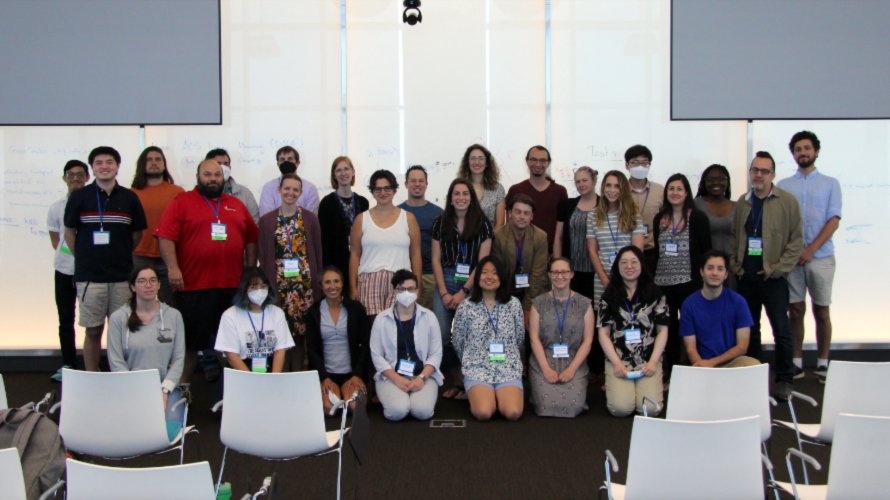
Applying computational and data science to social justice issues requires a lot of “non-mathematical work”
ICERM - April 2023

In order to develop new mathematical techniques to explore and address issues related to social justice, ironically, mathematicians need to do a lot of work considered by many to be “non-mathematical.” In the summer of 2022, mathematicians gathered at ICERM to confront these concerns directly as part one of a research program on data science and social justice. Conversations at “Data Science and Social Justice: Networks, Policy, and Education” primarily revolved around mathematical research and ideas. However, participants also learned from scholars and community members with deep understanding of the local context, carefully crafted shared language and definitions, and even engaged in qualitative research.
For example, one team investigated ideas related to equity and inclusion in science, technology, engineering, and mathematics on Twitter. Their work built on analysis of #DisruptJMM data gathered from Twitter (Diaz Eaton et al 2022). The #DisruptJMM hashtag was used primarily during the 2020 Joint Mathematics Meetings (JMM) in order to promote conversation about equity and inclusion throughout the meeting. In order to develop mathematical and computational techniques to further explore transmission of ideas, the team had to build out the existing Twitter data set to map tweets to ideas. Their ideas also benefited from ICERM workshop speakers and guests from fields such as communications, library sciences, digital humanities, and public health. #DisruptJMM: Themes of online social justice advocacy and community building in STEM by Roca, Diaz Eaton, Lewis, Hibdon Jr., and Marshall uses qualitative methods to code the full scraped dataset. They found that key ideas intended by the hashtag, such as representational diversity, were strongly present, as were new ideas introduced at JMM, such as decolonizing mathematics. The paper also connects the findings to existing literature on #HashtagActivism. For example, it expanded the notion of “community-building in academia” to include community support for those giving talks at JMM by announcing and retweeting details.
Another working group set out to analyze data associated with demographics of mathematicians. While asking questions about diversity of representation among mathematicians at various career stages and career paths, this research team needed to carefully define what “mathematician” means. On definitions of “mathematician” by Buckmire, Diaz Eaton, Hibdon Jr, Lewis, Kinnaird, Lewis, Libertini, Ortega, Roca, and Vindas Meléndez explores the potential ways to define a mathematician, and utility and drawbacks of each of them. In summary, their paper asserts that there is no one right way to define a mathematician and urges researchers to pay careful attention to how and why they choose a particular definition for the purposes of data collection. This article is a resource to help researchers choose a definition, reflect on the potential consequences of that choice, and clearly articulate the reasoning for their choice.
The above are examples of how careful mathematical work may require mathematicians to engage in “non-mathematical” work. Collaboration with researchers in other disciplines and reading articles in various disciplines helped strengthen the mathematical research questions, expand the knowledge of mathematicians, and lead to infrastructure—data and frameworks— to generate key insights.
References
- Diaz Eaton C, Bork Rodriguez WM, H Piper, Gómez-Gonzáles C. 2022. #DisruptJMM. Focus Magazine, Mathematical Association of America, February/March, pg 18-21.
- Roca, R., Eaton, C. D., Lewis, D., Hibdon, J. E., Jr., & Marshall, S. (n.d.). #DisruptJMM: Themes of online social justice advocacy and community building in STEM. Retrieved from osf.io/preprints/socarxiv/8cxm4